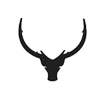The tanning of the raw skin of animals, especially cows, produces a product called leather. The tanning process has made perishable skin a stable, permanent and flexible natural material. The raw materials used in the leather industry are by-products of the meat industry. And meat is more valuable than skin.
It is interesting to know that the raw materials used in the fur industry are more valuable than meat, so meat is considered as a by-product. Animal skins are also used to make glue and gelatin.
What is taxidermy of animals?
Taxidermy of animals allows humans to use their skin. Skin is chemically a polymer of amino acids called proteins. Amino acids can easily be affected by microorganisms and agents through peptide bonds. In this case, the protein chain will be broken and the skin will lose its natural quality.
Therefore, to prevent the invasion and penetration of microorganisms and external factors in the skin, changes must be made on it. These changes include limiting water absorption, preventing swelling, opening and dissolving, and resistance to chemicals. And it should not change the original nature of the skin and at the same time make it a processed and valuable process
This set of operations in the leather industry isskin tanning call.Leather making or tanning is a practical way to prepare and polish animal skins to turn them into leather.
Tanning process
Steps of tanning the skin
In order to turn perishable skin into beautiful and durable leather, the following steps must be performed on it:
1. Dry skin and salt
The skin should be dried and salted after removal from the animal body for durability and maintenance (protection from external factors). The skin is exposed to the sun or by a stream of hot air.
2. Remove additions
At this stage, the extra parts of the skin (such as the ears, tail and extra flesh left on the skin) that have no value in leather making are removed from the skin.
3. Wetting
At this stage, the skin is soaked in water. Soaking the skin in water is to remove waste and soluble substances so that the skin returns to its natural shape.
4. Eliminate additives or detoxify
In the detoxification phase, all the excess flesh and fat that remains on the skin is removed. The detoxification step is done in two ways:
1. It is done by a detachment machine which consists of two rollers, one spring and grooved and the other rubber.
2. It is done by hand in the traditional way.
5. Abrasion and lime on leather
At this stage it is time to remove wool, hair and non-fibrous proteins from the surface of the skin. At this stage the skin should be placed in a solution of lime water and some sodium sulfide added to it. (Sodium sulfide is hydrolyzed with water and Hydrogen gives sodium). This solution accelerates the separation of wool and hair from the skin. After removing the hair and lime the skin glands, the colored tissues of the hair are destroyed, which is done by a machine. May be.
6. Remove lime from the skin
At this stage, it is time to completely remove lime from the skin. Lime is removed from the skin by chemicals such as ammonium salts, sodium bisulfite, sulfuric acid. If complete lime is not removed from the skin, it will cause brittleness and cracks on the leather surface.
7. Soften the skin
To soften the skin, after lime removal, the prepared skin should be placed in an alkaline bath that contains alkaline salts. Placing the skin in an alkaline bath makes the skin soft, supple, clean and smooth.
8. Eliminate excess fats
از آنجایی که بعضی از پوست ها (مانند پوست گوسفند و خوک و…)دارای چربی هستند بنابراین باید این چربی ها قبل از دباغی از روی سطح پوست گرفته شوند که این عمل توسط هیدرواکسید سدیم صورت میگیرد.هیدرواکسید سدیم چربی را به صابون تبدیل کرده که با شستن این صابون با آب در واقع چربی روی پوست را حذف کردیم .
9. Smoothing the skin (leather)
After degreasing, the skin is placed in an acidic solution that contains salt to make the skin fibers smooth and even.
10. Prepared leather
Finally, the skin is washed and rinsed in the form of leather, then it is cut to the desired size. For different thicknesses, the leather can be passed through a roller.
11. Leather coloring
Leather is dyed in two ways:
A) Mineral pigments:
در این روش مواد معدنی غیر محلول در آب هم چون اکسید روی،کرومات سرب و …که قدرت پوشش دهی زیادی دارند استفاده میشود.
B) Organic dyes (chemical)
در این روش از مواد شیمیایی محلول در آب همچون رنگ های آنیلی،آنیونی و مواد رنگی نیتروژن دار و…استفاده میشود.پس از رنگ کردن چرم و جلوگیری از سفت و سخت شدن چرم باید به آن روغن زدتا خاصیت نرمی و قابل انعطاف پیدا کند و همچنین خواصی چون کاهش میزان نفوذ گرما ،مقاوم شدن در برابر آب،ایجاد قدرت کششی و افزایش طول در چرم ایجاد گردد.

